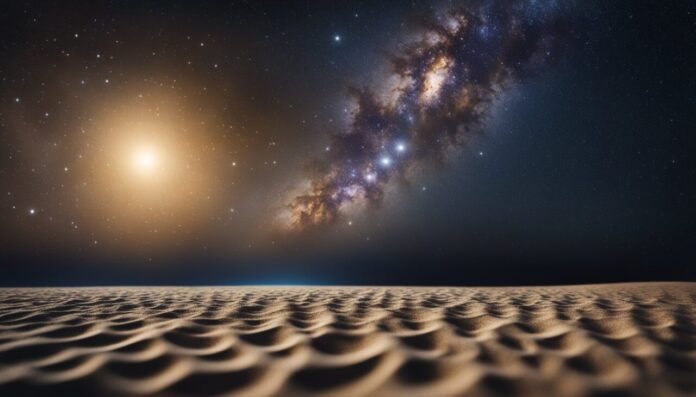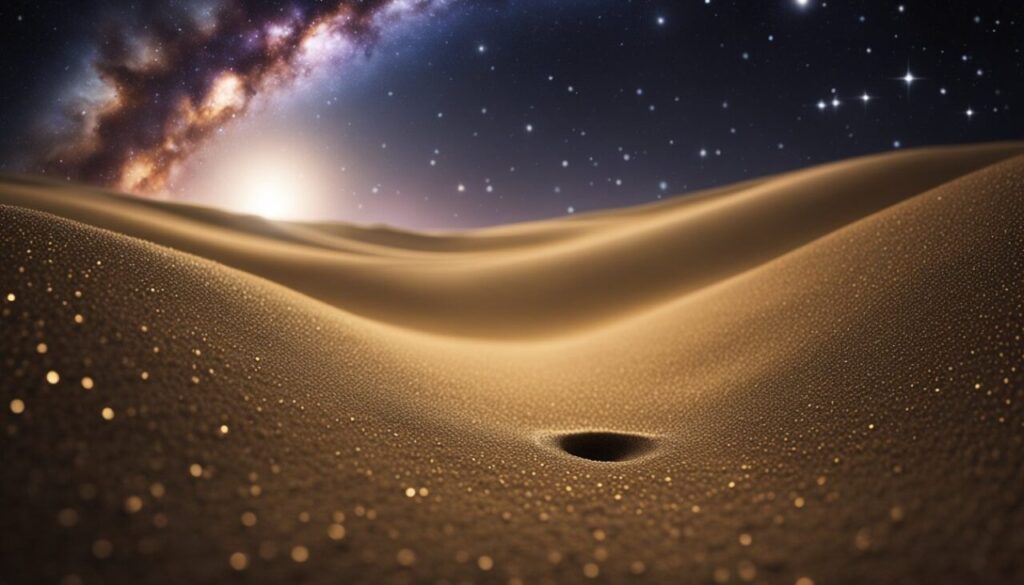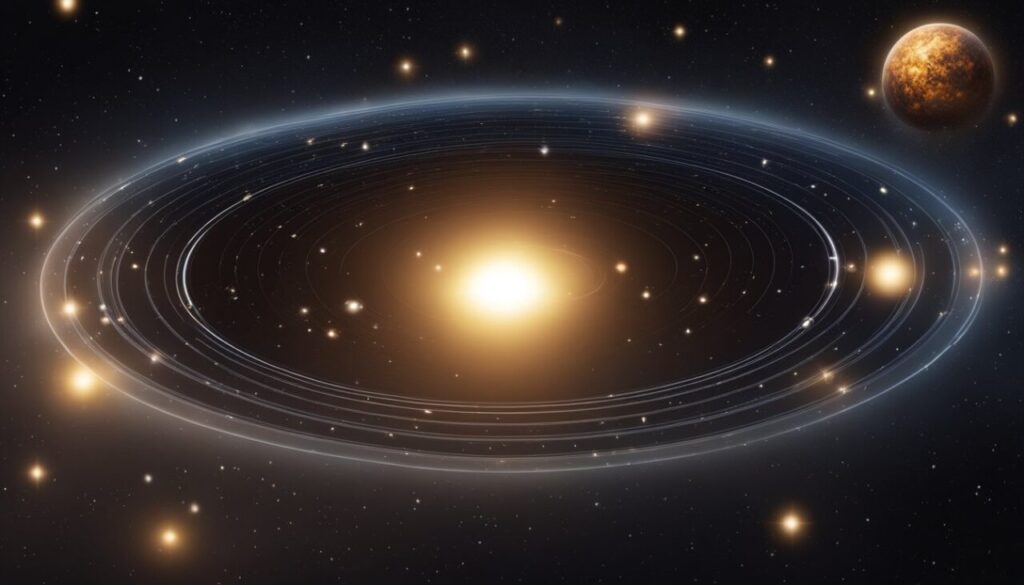
This is a rather intriguing question and an interesting mind puzzle. Namely, our brains cannot even completely comprehend the largeness of the planets, not to mention the sun or the galaxy.
Our galaxy, the Milky Way contains billions of stars, planets, and other celestial objects.
To put its size into perspective, the Milky Way is estimated to be around 100,000 light-years in diameter, meaning that it would take light 100,000 years to travel from one end of the galaxy to the other.
But for the average person, this number does not mean much.
I mean, how can you put 100,000 light years in some kind of perspective that is easily understandable for our brains.
Almost impossible!
That’s why we’ll use something that is more common for us like miles or kilometers and then we’ll put this into perspective and compare it with a grain of sand.
So let’s begin.
Interesting fact: The largest known star, UY Scuti, is so large that it could fit over 5 billion suns inside of it.
Comparing the Galaxy to a Grain of Sand – Initial Calculations

It’s hard to imagine the vastness of our universe, but one way to gain perspective is to compare the size of objects we are familiar with to those in space.
But first, we need to find out the size of our galaxy in kilometers and miles.
So, we’ve already mentioned that the Milky Way galaxy has a diameter of approximately 100,000 light-years.
One light-year is about 5.878625 trillion miles or 9.461 trillion kilometers.
So, to convert the Milky Way’s diameter from light-years to kilometers:
Milky Way diameter = 100,000 light-years × 9.461 × 1012 kilometers/light-year
Milky Way diameter ≈ 9.461×1017 kilometers
So, the Milky Way galaxy is approximately 946,100,000,000,000,000 kilometers or 587,900,000,000,000,000 miles in diameter.
Now that’s a huge number. Very huge.
Let’s read it out: nine hundred forty-six quadrillion, one hundred trillion kilometers or five hundred eighty-seven quadrillion, nine hundred trillion miles.
Ok, so now we have the size of our galaxy. We’ve agreed to reduce our sun to the size of a grain of sand.
Let’s also agree that the average grain of sand is 1 millimeter or 0.0393701 inches.
So, now we have all the numbers to answer the question?
Not yet.
We need to find out how much larger the galaxy is versus the sun in real life and then we’ll use a model of grain of sand.
Let’s just say it – the Milky Way is significantly larger.
No, no – this is an understatement.
The Milky Way is about 675,700,000,000 times bigger in diameter than the Sun.
Ok, now we have everything, so let’s answer the question.
Sun as a Grain of Sand versus Milky Way?

So, if we scale down the Sun to 1 millimeter, we can find out the size of the Milky Way accordingly.
Given the ratio we mentioned earlier, which is approximately 6.757×1011, representing how many times larger the Milky Way is compared to the Sun:
- Size of the Sun (scaled): 1 millimeter.
- Calculating the size of the Milky Way if the Sun were a grain of sand:
- Milky Way diameter (scaled)=Sun diameter (scaled)×Ratio
- Milky Way diameter (scaled)=1 mm×6.757×1011
- Milky Way diameter (scaled)=6.757×1011 mm
But let’s convert this to kilometers and miles
6.757×1011 mm=6.757×108 meters=6.757×105 kilometers
So, if the Sun were scaled down to the size of 1 millimeter, the Milky Way would be approximately 6.757×105 kilometers in diameter.
In other words, if the Sun were scaled down to the size of 1 millimeter, the Milky Way would be approximately 675,700 kilometers or 419,672 miles in diameter.
To put this into perspective the diameter of Earth is approximately 12,742 kilometers (7,918 miles).
This means that the diameter of the Milky Way galaxy if the Sun were scaled down to the size of a grain of sand, would still be approximately 53.01 times bigger than the diameter of Earth.
Just imagine the enormous size – the Sun is a grain of sand and the galaxy is still the size of 53 Earths.
Unbelievable!




















